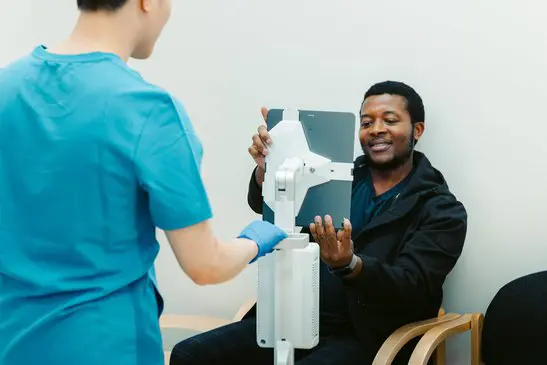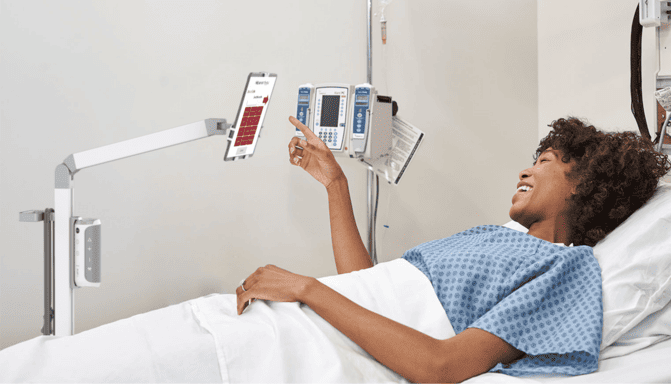
Patient engagement is vital to maintaining patient satisfaction. So you need to be strategic and develop processes to increase patient engagement. The following eight strategies for patient engagement will ensure that you have satisfied, happy patients.
The COVID-19 pandemic changed many aspects of provider-patient relationships. One of the most influential changes was that patients became more concerned about receiving accurate medical information and actively participating in their healthcare decisions. Patients began to demand better access to providers and transparency regarding treatment plans, with 61% of patients desiring better patient engagement in 2022.
As the healthcare market becomes increasingly competitive and patients continue to behave as consumers, healthcare organizations need to develop effective patient engagement strategies to demonstrate their value to patients and improve patient outcomes and satisfaction.
But what is patient engagement, and how does it affect patient satisfaction? We’ll answer those questions in this article. We’ll also consider eight effective strategies for patient engagement to increase patient satisfaction.
Patient engagement in healthcare involves actively gathering medical information and making decisions about their health. Engaged patients are also known as active patients.
Patient activation falls under the umbrella of patient engagement. Patient activation measures a person’s knowledge, willingness, and competence to participate in care decisions.
There are several reasons why patient engagement is important to increase patient satisfaction.

Activated patients are proactive in their health management and engaged in every part of the healthcare decision-making process, which improves their health outcomes in several ways:
Activated patients are more likely to participate in numerous positive behaviors, including:
Engaged patients are also more likely to recognize health issues early. Self-management and self-monitoring benefit both patients and healthcare providers by reducing:
Engaged patients are also more likely to recover from their conditions quickly and have fewer complications from uncontrolled symptoms than unengaged patients.
Since engagement ensures patients understand their treatment plan and condition, treatments are often more successful. Healthcare providers can provide better care when patients actively work together with them to improve their health.
An engaged patient’s commitment to follow through with your treatment plan will grow. As they experience positive results from doing so, their satisfaction will also increase.
Patient engagement doesn’t just improve relationships between the primary provider and the patient. It involves a multi-faceted collaboration between patients, their families, their representatives, and the entire care team.
The care team communicates openly with patients, providing education, encouragement, and stimulation for patients to achieve optimal health.
In return, patients feel comfortable completing their own research, asking questions, and building a treatment plan together with the care team. They can actively manage their condition and make informed decisions.
The open communication between patients and the care team deepens patient trust as they seek to improve their health. Patients will feel valued, heard, and well-cared for. They’ll feel that you are indeed a team and that you care about their well-being, strengthening your provider-patient relationship.
You succeed in providing an exceptional patient experience, and patients become satisfied with the care they receive.
Patient engagement is vital to maintaining patient satisfaction. So you need to be strategic and develop processes to increase patient engagement.
The following eight strategies for patient engagement will ensure that you have satisfied, happy patients.
Patient engagement begins when patients are fully knowledgeable and begin to make active decisions about their health. So let patients have a hand in care decisions instead of developing a plan on your own.
Take the time to educate your patient about their condition, treatment alternatives, and the reasons behind your recommended course of treatment. Allow them to decide on aspects of their care, such as medications (if there are alternatives), treatment options, referral locations, and more.

One of the best patient engagement strategies is to treat each patient as an individual. Your patient demographics may vary widely, so what may engage one patient may not engage another.
So segment your patients by demographics to identify how to engage them successfully. The most common demographics include:
You may also choose to segment your patient population even further by using demographics like:
Their location can also indicate the type of community they reside in, which can also help you develop customized engagement strategies that will work for every patient.
Every patient is different, even if they fall into the same demographic classification. So don’t take a “one-size-fits-all” approach using only one demographic.
You can combine several demographics to develop tailored engagement strategies for specific patient groups, increasing their satisfaction with your messages and proposed treatment.
Patient engagement is a collaborative effort, so you want to uphold your part by providing patients and their families with the guidance and educational resources they need to make informed decisions about their health.
Healthcare providers can improve patients’ health literacy by promoting patient education. Health literacy — an individual’s capacity to obtain, comprehend, and act on health information — allows patients to make informed decisions and self-manage their own health, which improves health outcomes.
As you spend more time communicating with your patients, you’ll increase their satisfaction and enthusiasm about their health.
The best patient engagement strategy begins before patients even step in the door. You can encourage them to use a patient portal to complete pre-visit procedures, such as:
Patients will not feel rushed to complete their paperwork, increasing accuracy and making them feel more comfortable sharing detailed health information.
It also makes the first appointment much less stressful and more streamlined. You and your team will already have the information you need to address their health concerns, increasing patient satisfaction.
Utilize various patient engagement tools to increase patient activation. Engagement tools increase convenience and streamline your processes, directly boosting patient satisfaction.
There are various tools available, such as:

Patients often spend more time with your nurses and other staff than they do with you when they visit your practice. So make sure your entire team is on the same page.
Have regular meetings to formulate engagement strategies, then make actionable plans to carry them out. Emphasize the importance of education in the patient experience, and have regular training to keep everyone involved.
When your entire practice uses the same wording and has the same approach to patient care, patients will be reassured that the entire team is working with them to improve their health.
Adopting new technologies is one of the best ways to differentiate your practice. Technology helps enhance the patient experience, making processes more accessible and streamlined.
So finding the right technological tools goes a long way toward increasing patient engagement. Offer telehealth options to communicate with your patients about their care and make treatment more convenient.
For example, you can incorporate remote monitoring into your practice. Remote monitoring is a telehealth option that uses digital technology to analyze, monitor, and report health conditions remotely. You can use remote monitoring devices to collect their vital signs, weight, and other important measurements and transmit them directly.
You can use the same system to speak with your patients on a monitor or tablet in real-time, so they never have to leave their homes to receive care.
There are many other telehealth options you can implement in your practice, such as:
The old communication methods of letters and long phone call queues are no longer sufficient in today’s competitive healthcare market. Patients seek convenience in every step of their care journey, including communication.
In fact, 71% of customers expect brands to provide customer support through digital messaging platforms, and 41% of customers prefer live chat over other communication channels.
So healthcare organizations need to develop various approaches to patient communication. They should ensure that patients can easily get in touch by developing a robust digital engagement strategy, such as live chat and instant messaging solutions.
Patient engagement is the key to patient satisfaction. Developing an effective patient engagement strategy benefits you, your patients, and your entire care team. Your practice will stand out among the crowd and continue growing for many years. Medical carts are an excellent way to incorporate telehealth and streamlined technological processes into your practice. Tryten offers high-quality, easy-to-use telehealth carts for every stage of the provider-patient journey. Contact us today to see how medical carts can improve your patient engagement and help your practice thrive today.